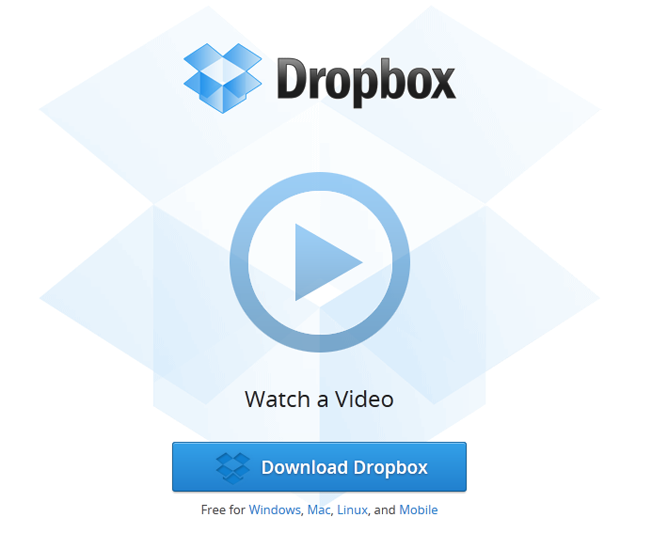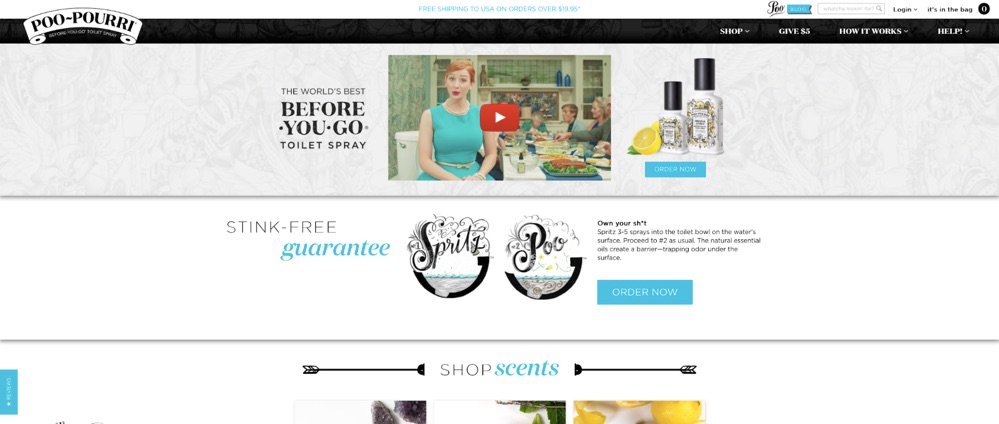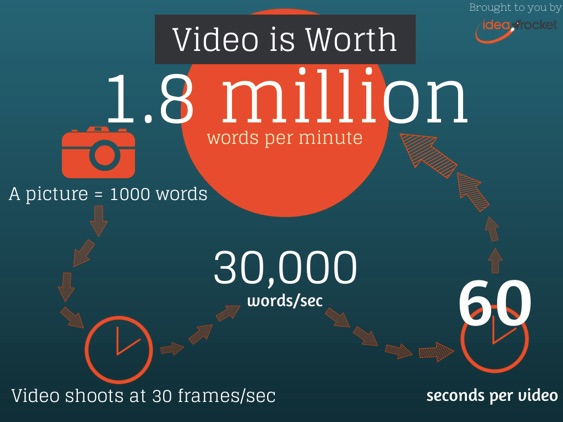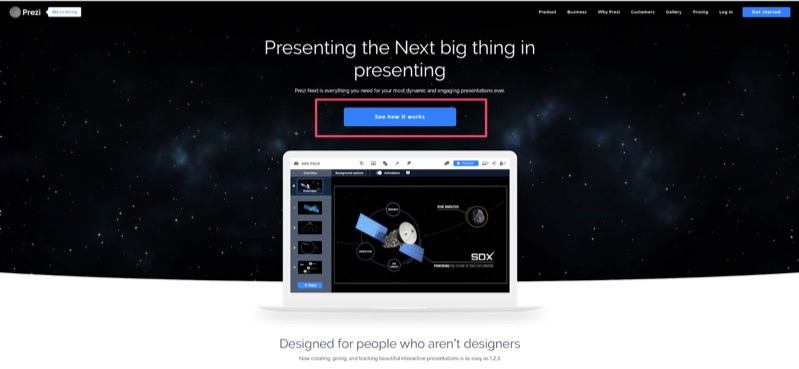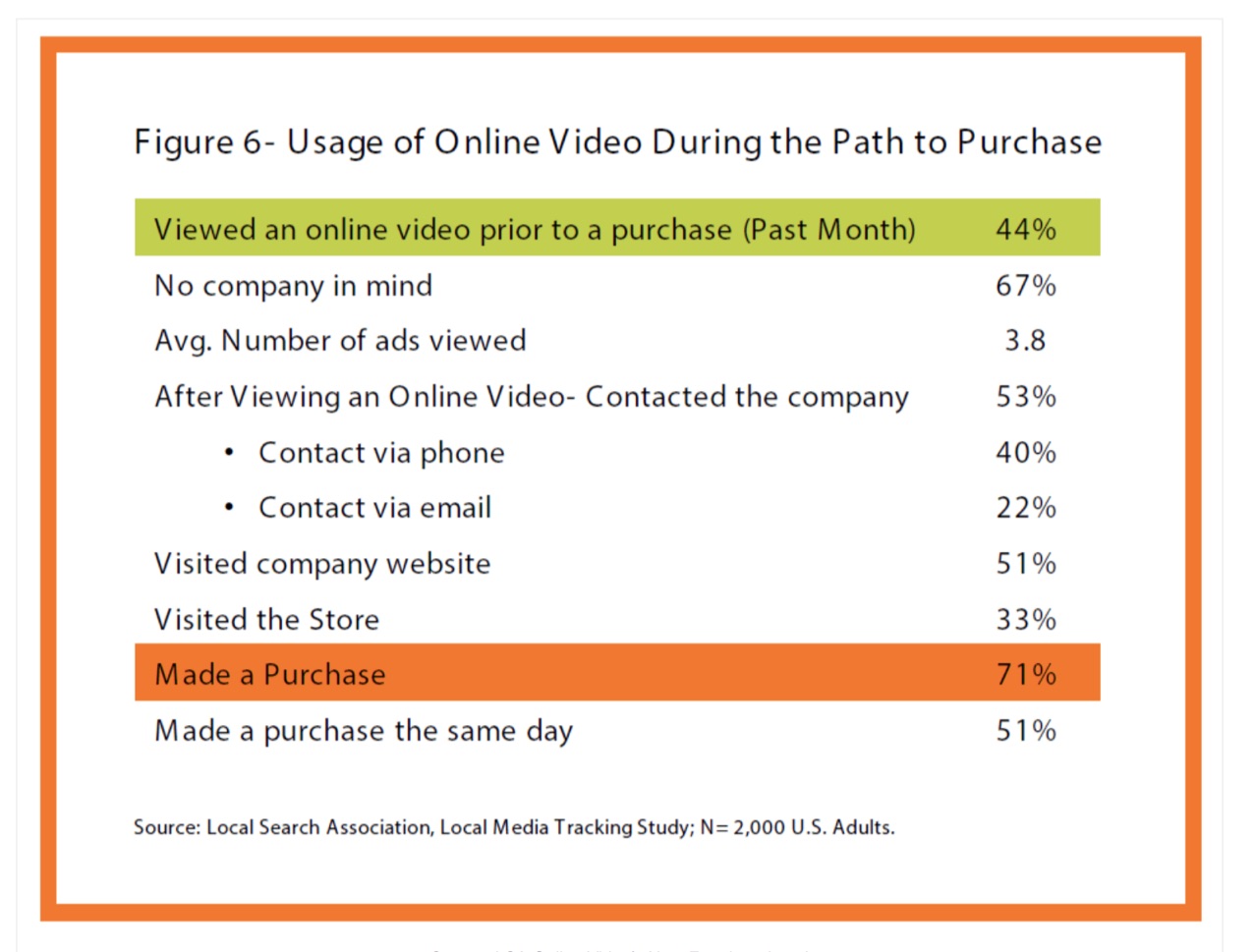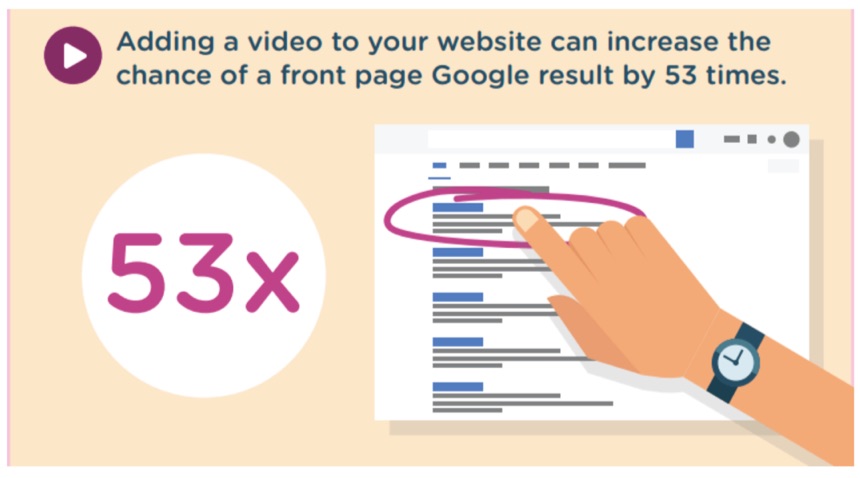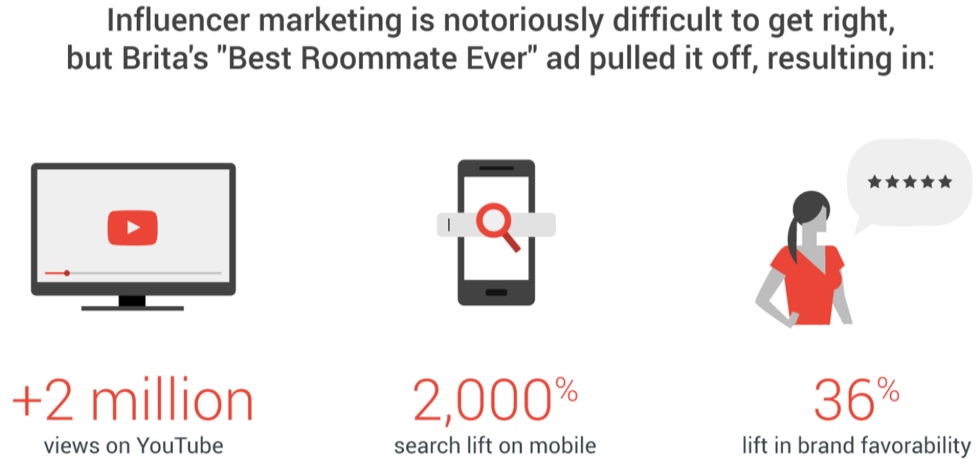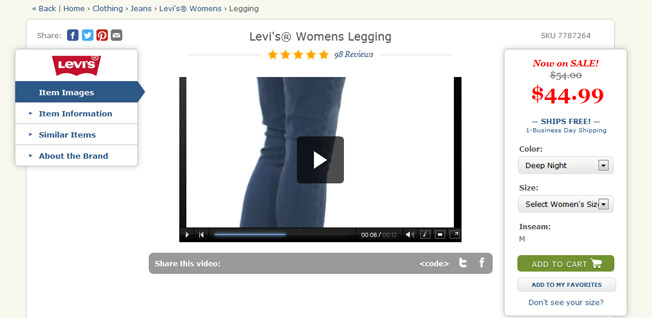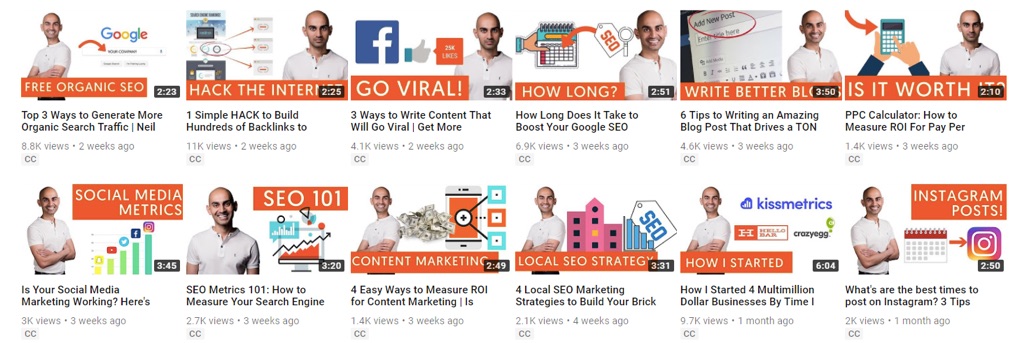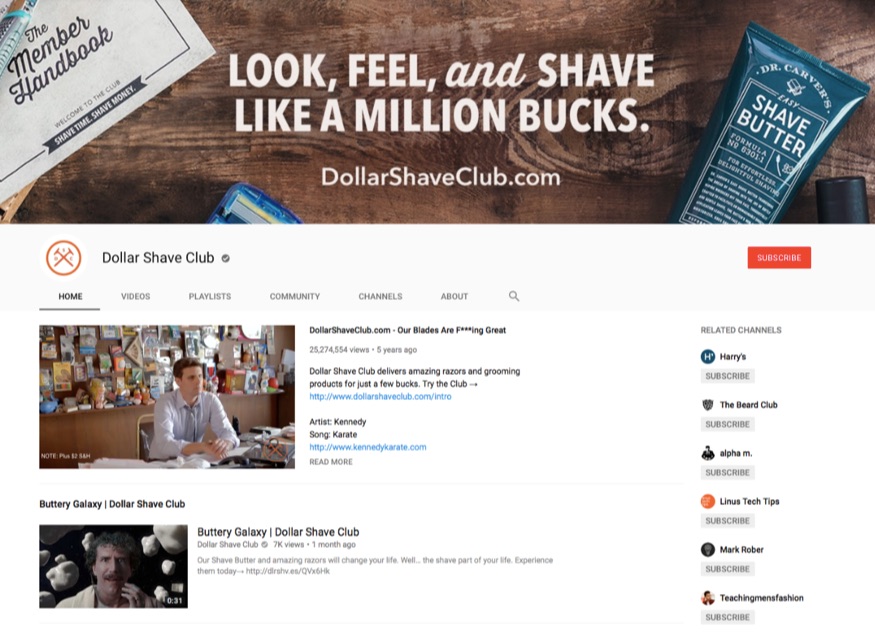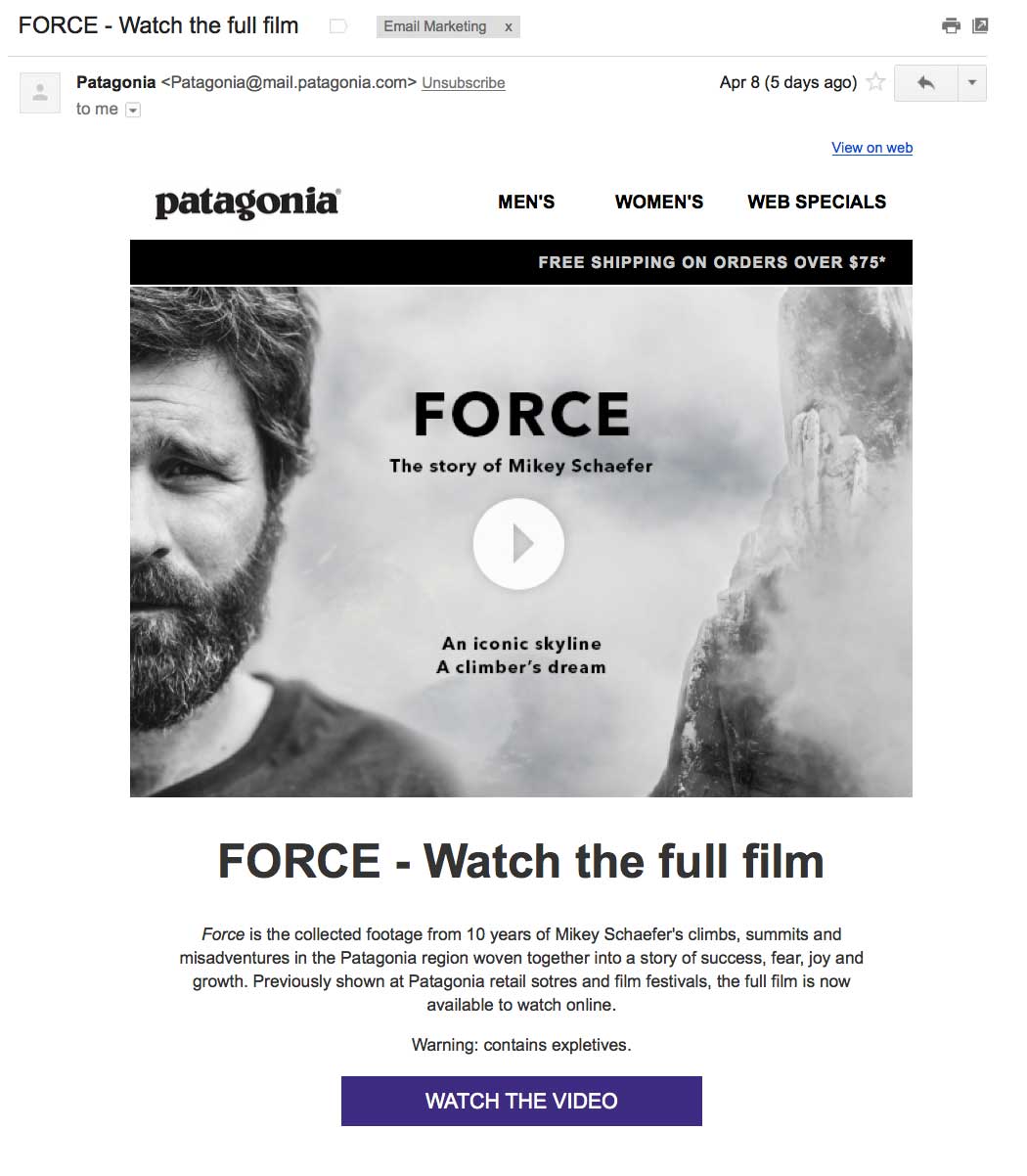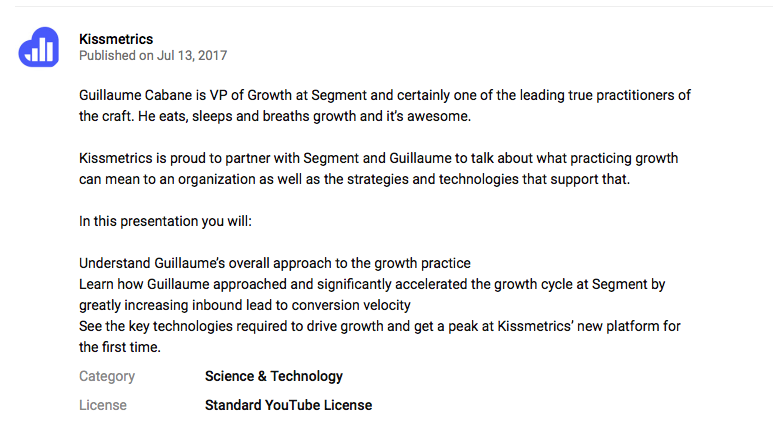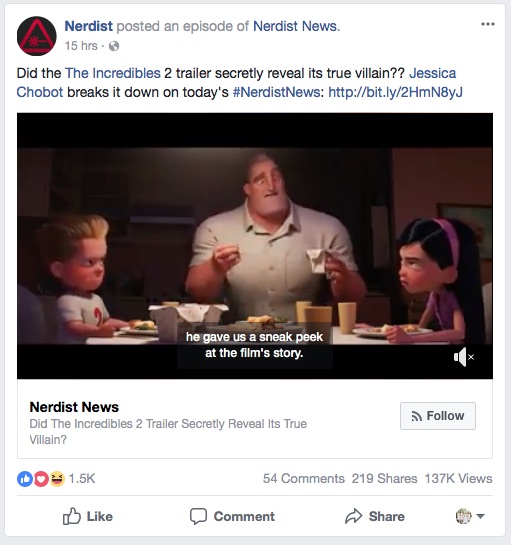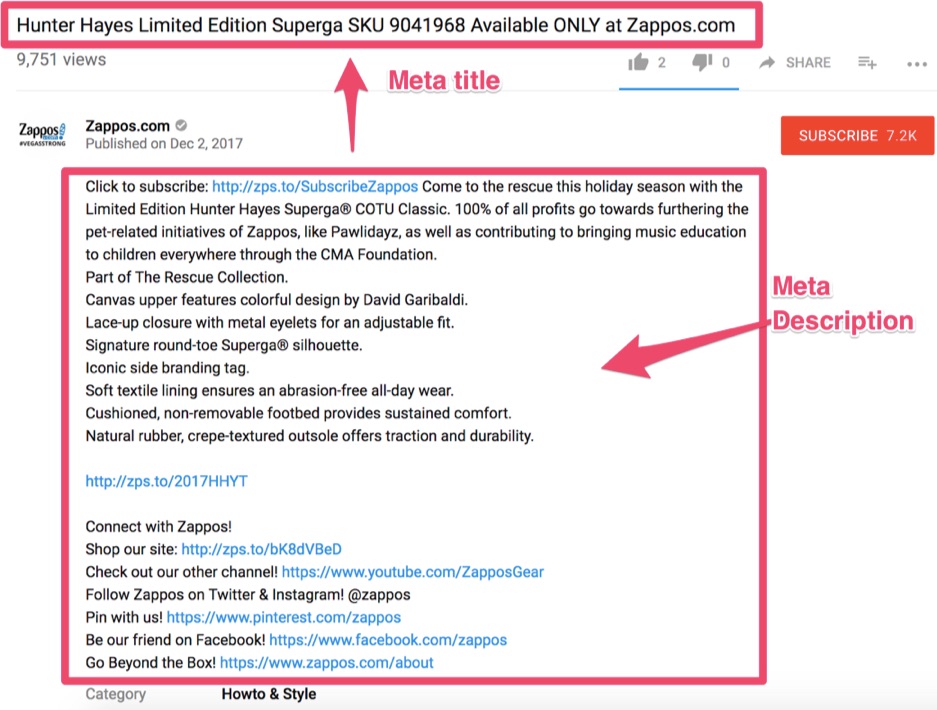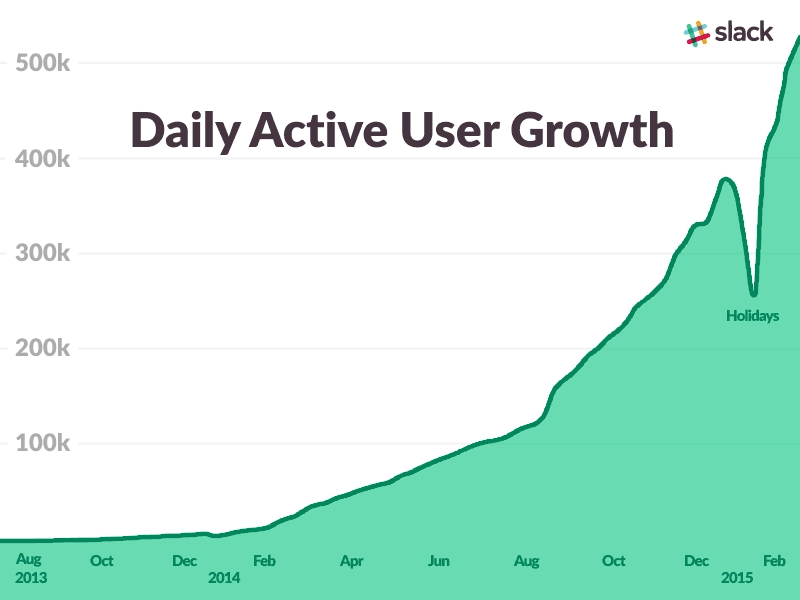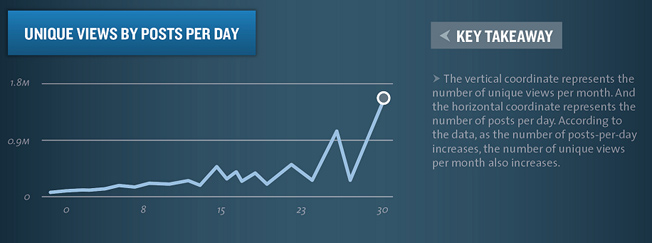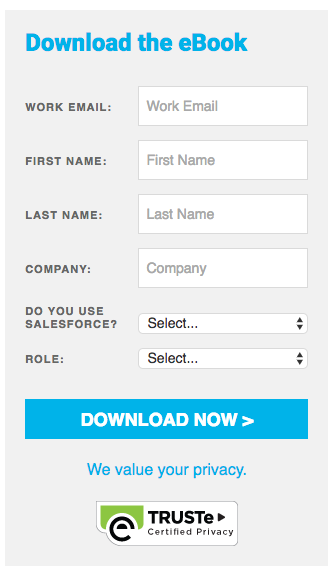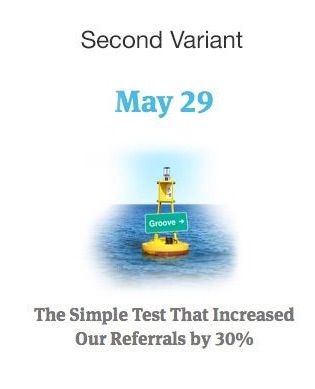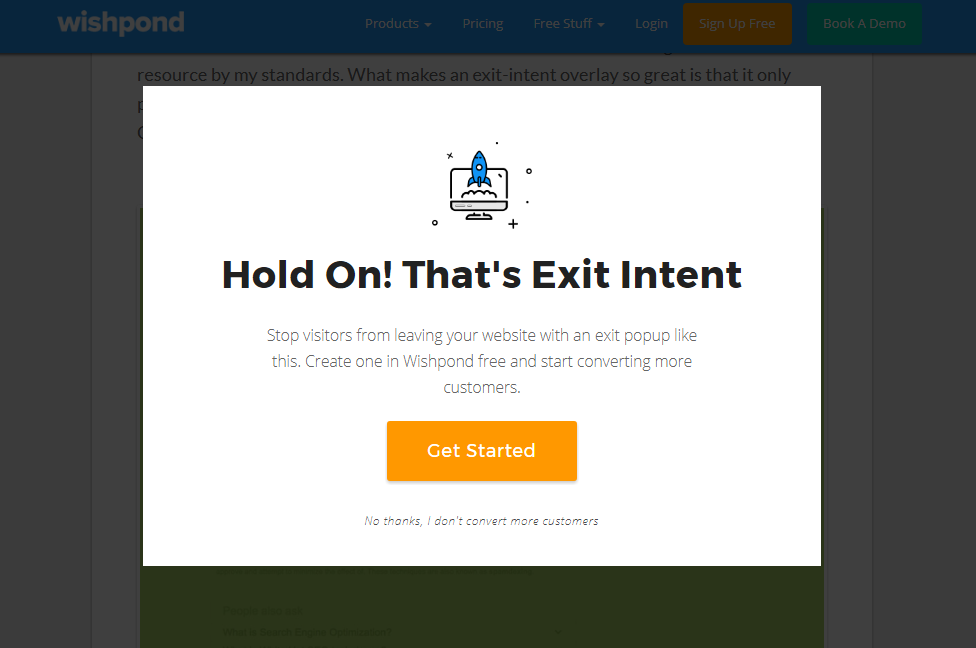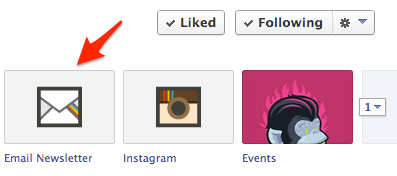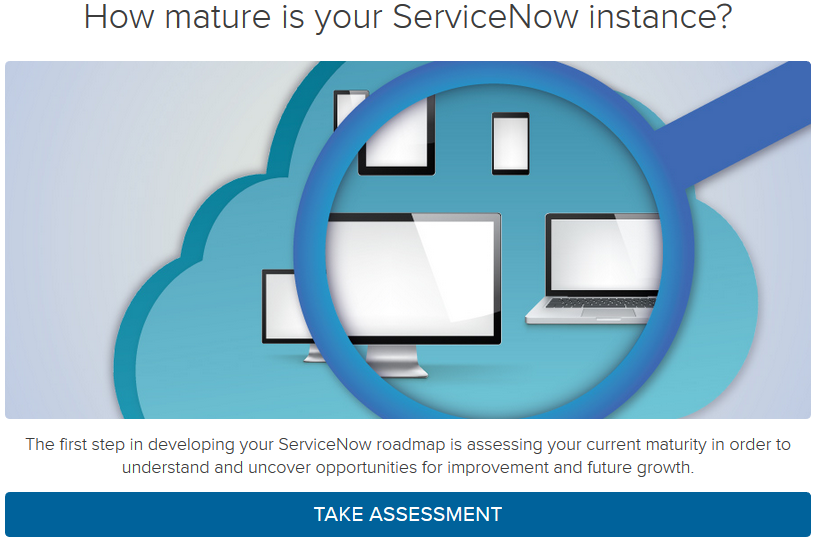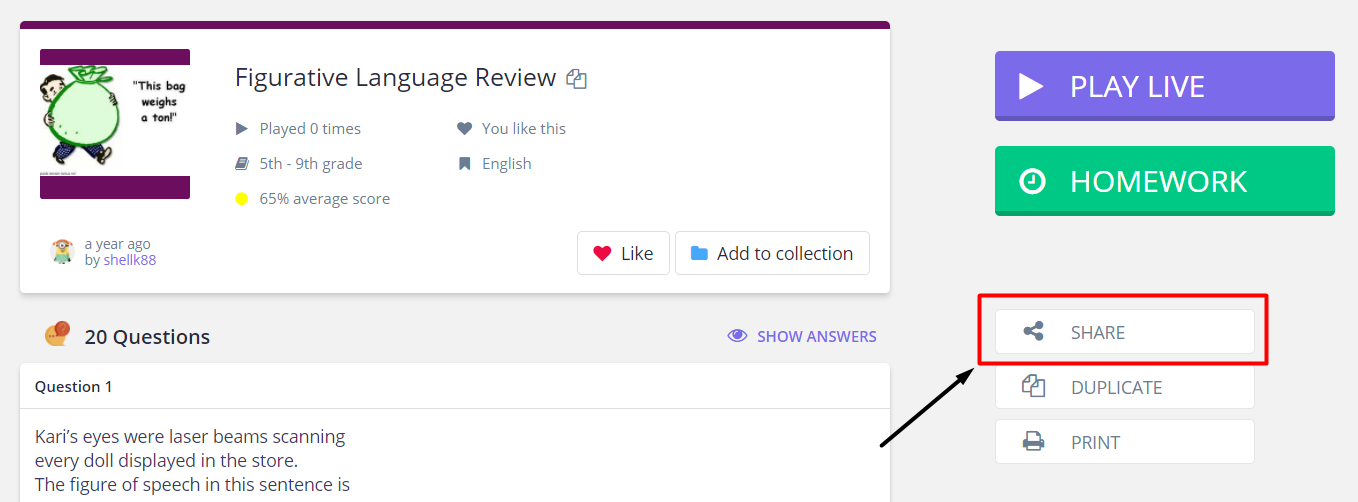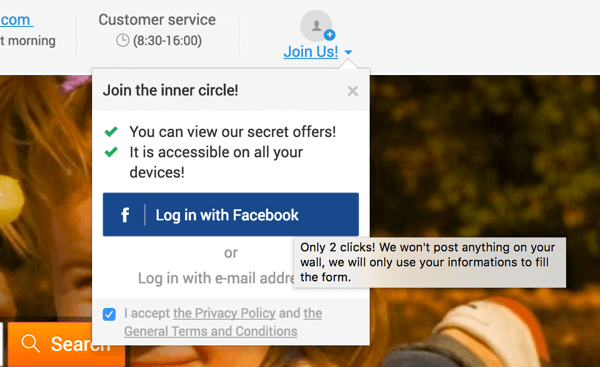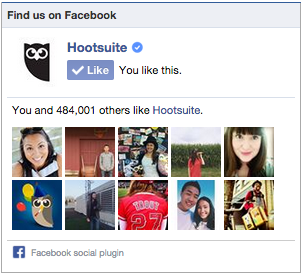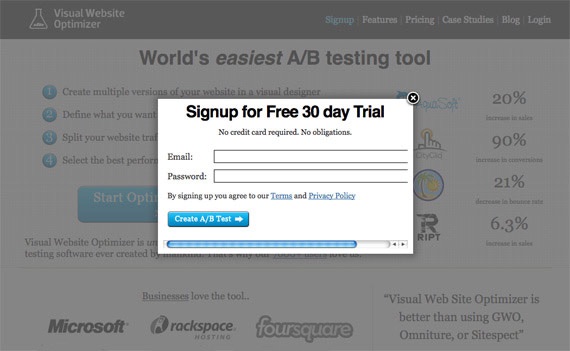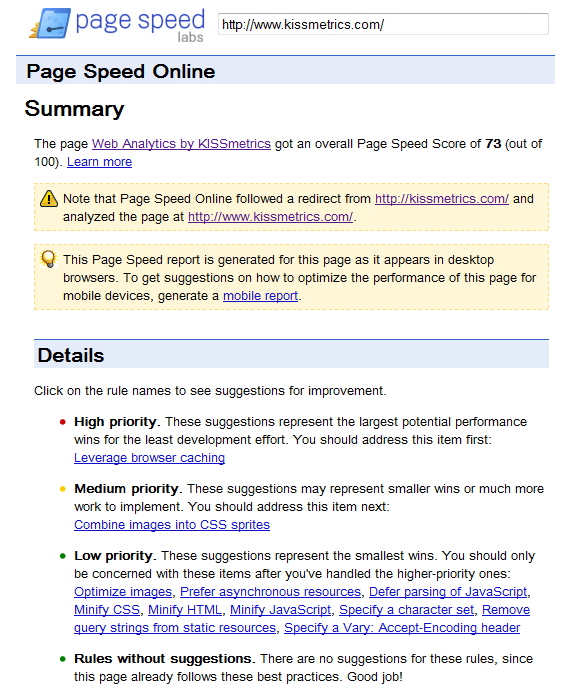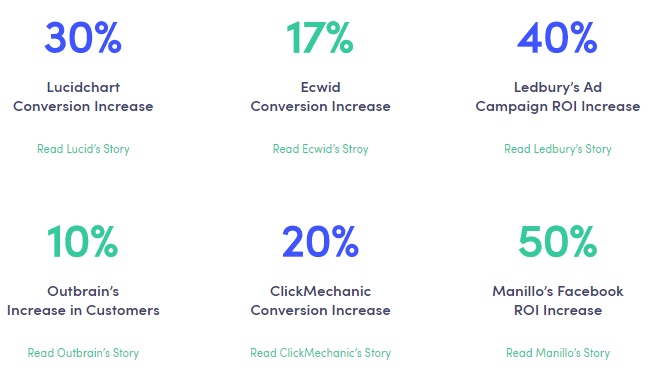Over 3.7 million blog posts were written today.
The market is flooded with blog articles. So how does your content have a chance of standing out?
Successful content marketing has always been about standing out in the crowd by producing the best content. Now that there’s more (great) content than ever.. how are you leveling up?
— Hiten Shah (@hnshah) 2 January 2018
https://platform.twitter.com/widgets.js
And while blog competition increases, click-throughs on display ads have continued to decrease. In fact, the average click-through rate of display ads is a staggeringly low 0.05%. Yikes.
Video marketing may be the solution to let your content shine.
By 2021, video traffic will account for 82% of all consumer Internet traffic.
The increasing importance of video marketing is clear. But, is it the right time to add video marketing to your content marketing strategy?
Here’s a list of three reasons why you need to invest in video marketing and three reasons why video marketing might not be the best fit for you.
Three reasons to invest in video marketing
1. Provide valuable information
If someone lands on your page and can’t figure out what it is that you do, that’s when bounces happen.
When Dropbox first launched, the concept was fairly foreign to most.
Since Dropbox’s UI wasn’t a familiar idea, they decided to add a video to their landing page that explained what Dropbox is, and how it works.
After adding the video, Dropbox saw their conversion rate go up 10%.
Adding a video to a landing page can actually boost your conversions as much as 80%.
Users need to not only understand what your brand, product or service is, but also how to use it.
If someone can’t connect to your product, then why would they stick around to read more about it?
The problem and the solution need to be clear, concise and obvious.
A landing page with crowded text will go unread.
So do away with long, drawn-out explanations of a service. Instead, insert a video.
Poo-Pourri is a great example of this. It’s a novel product in a newer product category. At the time of its launch, there weren’t many other products like it.
A video on the landing page visually explains what could be a confusing concept. It details how the product works and also demonstrates where to use Poo-Pourri.
Video is a useful medium for easily deconstructing a complicated theory, concept or idea.
In fact, Forrester Research estimates that one minute of video equates to approximately 1.8 million written words.
It visually or audibly explains the benefits of a service and lets a viewer fully comprehend in a digestible way.
90% of information transmitted to the brain is visual, and visuals are processed 60,000 times faster in the brain than text.
Videos can also enforce a strong CTA. Take the landing page for Prezi, for example:
The introductory video plays on the landing page, below the CTA button.
The animated video demonstrates how easy Prezi is to use and how users can create dynamic presentations. The CTA button invites users to click through to ‘see how it works.’
2. Reach a new audience
Many companies think of video marketing as a ‘nice to have,’ not necessarily a ‘need to have.’ And I can understand why. Video marketing is a big investment of time, effort, and money.
Your competitors will all have a social media presence, email marketing, and a blog but they may not have video marketing.
So, why bother?
As the market becomes more and more saturated, it’ll be important to separate from the pack.
Video content continues to grow, as does the appetite for it. 53% of people want to see more video content from marketers.
On YouTube, almost 5 billion videos are watched every day. The average mobile-viewing session on YouTube lasts more than 40 minutes.
If you don’t embrace video marketing, you’re missing out on establishing yourself as a leader and authority on your service or industry. And you’re also missing out on a large potential audience.
If you aren’t capitalizing on that traffic, you won’t be generating those leads.
Remember Dollar Shave Club?
Before that viral video, had you heard of the company?
Probably not. An effective video, like the one Dollar Shave Club produced, can define a brand.
80% of users can recall a video ad they viewed in the last 30 days.
And enjoyment of video advertising increases purchase intent by 97% and brand association by 139%.
More than a third of all online activity involves watching videos.
The virality of Dollar Shave Club’s video took the startup to a multi-million dollar company. Capitalize on consumer behavior like Dollar Shave Club did.
As consumers gather their information through video, let them discover your brand with an entertaining and informative video.
85% of the U.S. audience watches videos online. And in 2019, video is forecasted to make up 80% of all Internet traffic.
If you’re not working to capture a slice of this pie, you’ll end up hungry for leads.
LSA surveyed 2,000 consumers and found that 44% of buyers viewed an online video while searching for products and services.
53% of viewers actually contacted the business after watching a video, and 51% visited the business’s website.
As users search for your products, services or business online, make sure they‘re finding your video.
Adding a video to your post can increase your chances of making it to the top of Google’s search results by 53%.
Video content opens you up to an entirely new audience that can find you and buy your product or service.
After watching a product video, viewers are 85% more likely to purchase, and they spend 100% more time on pages with videos.
As Google puts more emphasis on videos and we consume more and more videos, without a strong strategy you’re left with a serious case of FOMO.
Get ahead of your competitors and put together a video marketing plan.
3. Conversion
Video is a great way to disperse a message and convert viewers, but if the message isn’t compelling in the first place, it can fall flat.
Refilling a Brita isn’t a topic you would usually rap about. However, when Clorox brand Brita partnered with influencer King Bach and NBA player Stephen Curry, the outcome was a funny rap video about just that.
Consumers are bored by sales-focused messages. I mean, would you want to watch a commercial just about how great something is?
Content that strictly pushes a commercial agenda doesn’t engage with an audience.
You can have video content posted, but if it doesn’t resonate, no one will watch it.
Provide video content for your viewers that gives them something of value.
Whether it’s information on how something works, what a product does, or just pure entertainment like the Brita video above.
A viewer becomes engaged and will stay to watch your video if it’s of interest to them.
The Brita spot led to over 2 million views and a 2,000% mobile search lift.
According to Invodo, 52% of consumers say that watching a product video makes them feel more confident about making a purchase.
Viewers who watch product videos are almost two times more likely to purchase a product.
Clinique tested three, six-second bumper ads on YouTube. Results showed a relative ad recall lift of 69.4% and a product awareness lift of 26.1%.
It’s clear how effective video can be. However, before initiating your video marketing efforts, put together a well-constructed strategy for your specific audience.
You should be able to answer the following questions before you develop a video marketing strategy:
- Who is watching these videos?
- Where are they watching them?
- Why are they watching them?
- When are they watching them?
So let’s dive into those.
Who is watching these videos?
Car parts retailer Advance Auto Parts included instructional and how-to videos on its website and on its Facebook page.
They found that visitors who watched a video stayed on the site twice as long and visited twice as many pages compared to those who did not watch a video.
Knowing their audience played a big part in this success story. Those purchasing car parts should have tutorial videos at their fingertips as they are most likely DIYers.
The videos show how consumers can make the most out of the items they have purchased. They know their audience wants this information because they engage with it through social media and on-site.
Where are they watching them?
Once you have an understanding of your audience, consider where they will be searching for this information or where they would want this information.
Retailer Zappos added product videos to their product pages and saw an increase anywhere from 6% – 30% in sales.
In this instance, a product video, wouldn’t work on a channel like YouTube.
They’re in the purchasing funnel, looking to buy. And that’s why they’re on the product page.
Give them the info they need to complete their purchase.
Your strategy should differ for landing pages, YouTube, product pages or other areas.
Why are they watching them?
Do they need an intro to the company? Or a detailed tutorial on a specific product feature?
Use your analytics, consumer insights, and customer feedback to determine your video content.
A SaaS company might find hosting videos on how to get the most out of their product on their site successful.
However, on YouTube, they may want to think about entertainment value and explore interviews with thought leaders.
An e-commerce site might take advantage of product videos to increase sales but on YouTube, could consider partnerships with content creators that use products in new and innovative ways.
Take this World Market makeover, for instance:
When are they watching them?
Your strategy should differ whether it’s a landing page, product page, social channel (Facebook or YouTube) or an FAQ section.
Video content should match what the consumer is after, when they’re after it.
Lands’ End makes use of video marketing in a unique way: by having customer service agents ready to video chat within the Customer Service section.
Customers can get instant access to representatives, ask questions and get the answers they need.
Don’t ask: “What video should I make?” but instead, “What problem am I trying to solve?” That’s the key to effective video marketing when done right.
Emphasis on the ‘done right.’ Your video content needs to be a smart strategy but also needs to be executed properly.
With that said, here are three reasons why video marketing may not be right for you.
Three reasons to not invest in video marketing
1. You can’t produce enough quality content
When Pinterest first came onto the scene, every brand immediately jumped onto it.
I had clients asking me to develop Pinterest strategies for them. I mean, “had I heard how much traffic Pinterest drives?”
Which is totally valid. But also, not so valid.
Pinterest, like YouTube and video content, is all visual. Indie furniture brand 57st. Design knew that Pinterest was a visual platform where the audience would be searching for inspiration.
With this in mind, they built their channel which resulted in 50% – 60% of their website traffic coming in through Pinterest.
This goes to show that successful channels are quality channels. Not just in what you’re showing, but how you’re showing it.
If you can’t produce consistent, quality content on an ongoing and timely basis, then just like Pinterest, video marketing might not be for you. At least, not right now.
Along with being consistent, your video content needs to provide valuable information for your users. A profitable video marketing strategy marries together good ideas with good execution.
Video content with bad sound or visual quality is unprofessional and doesn’t indicate that you’re a thought leader in your industry.
Growing your video channel also requires consistency, not just in your posting frequency but also your presentation. Check out how I do this on my channel.
My YouTube channel uses consistent branding across all videos and on my channel homepage.
Plus, I make sure it’s regularly updated with videos uploaded every 2 – 3 days.
My channel features attractive video thumbnails, high-quality video, and enriching information.
It brings in new traffic, retains returning traffic and establishes thought leadership. And that lets me stand out above other channels.
If your business doesn’t have the manpower, time or money to invest in quality video content, consider waiting until you do to launch your video marketing.
Otherwise, it’s just hard work with a low return on effort.
2. You don’t have a cohesive cross-channel content strategy
How will you get eyeballs on your videos?
Without views, great videos are just that, a great video.
The ultimate goal isn’t views though, it’s most likely conversions, generating new leads or driving traffic. But none of this happens without viewers.
If you don’t have a plan set in place to promote and leverage your content to drive traffic to gain views, then it’s probably time to rethink why you’re even producing videos in the first place.
Once your video is complete, devise how you will leverage the content by cross-promoting it.
Keep in mind that not all content is fit for all channels.
Resolve how you can use your existing network to share your content. And pay attention to not just the video but all copy that goes along with it.
Is your video going to be posted on YouTube or on your site? Can it be posted to both?
Dollar Shave Club’s video was posted to both their landing page and their YouTube channel.
Not all content is created equal, and different content is best suited for different channels.
But there is nothing wrong with cross-promoting your content as long as it works for all channels.
Cross-promoting content, or having shareable content, can help to amplify your content and raise brand awareness.
As an introductory video on the landing page, the video explains the concept of the company. The entertainment value makes it shareable, so it does well on Facebook or other social media.
Use your existing audience to promote your video.
One easy way of doing this is with email marketing.
Videos get the point across easily and can enforce an email’s CTA. Use ‘video’ in the subject line to increase click-throughs.
In fact, inserting ‘video’ into the subject can increase conversions by up to 20%.
Take these pointers into consideration so you can meet KPIs with your video marketing:
Ensure you’re using copy to your advantage.
For business-related videos, you may want to have a transcription available in the video’s description box so that viewers can read along as they watch.
Your transcription should contain keywords so your video can be found by searchers looking for relevant material.
YouTube automatically transcribes your video and uses it to rank your video.
Though the transcription doesn’t always match your actual content so be sure to review and revise your transcription. You can also use a transcription service.
You may also want to add links to social media accounts, blog posts or an outline of the presentation.
Social media videos should have subtitles included since videos on Facebook autoplay without audio.
As more viewers watch on-the-go, playing audio while you commute isn’t always convenient.
Keep it mobile-friendly
How long is your video? This is especially important for mobile. Videos under 90 seconds see better engagement and an average retention rate of 53%.
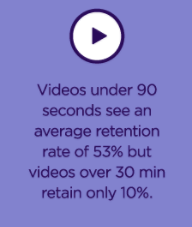
According to YouTube, mobile video consumption grows by 100% every year.
If your content is more entertainment than instructional, you’ll want shareable content for social media channels, so keep timing in mind.
But currently, viewers watch 86% of business-related videos on desktop browsers and only 14% on mobile devices.
This gives you the option of extending the video a little longer so you can add in more useful information.
Capture SEO
When using video, you have 53 times higher likelihood of ranking on the first page of Google.
But don’t forget that while social media channels (like YouTube) rank on Google search results, YouTube itself is a search engine and owned by Google.
‘How-to’ searches were up 70% year-over-year on YouTube. Your video content needs to focus on SEO so that you’re capturing organic traffic.
If you aren’t using the right keywords, your video will be irrelevant and hard to find. When strategizing your video content, think about user needs and keyword intent.
Then utilize your metadata. Metadata is made up of your title, description, and tags.
These are optimal locations to optimize your chosen keywords.
You can also group similar videos into playlists on YouTube. These playlists should consist of relevant videos and can feature a description and keyword-focused title.
Playlists rank in Google and YouTube search results. By defining the subject matter, it helps to facilitate more views to your content.
3. You don’t have the time to measure results
You know the old saying, “If a tree falls in a forest and no one is around to hear it, does it make a sound?”
That’s kind of like marketing without measuring. How can you tell it’s actually worth your time and effort? How can you know how to grow your channel or business even more?
52% of marketers believe that video is effective for brand awareness. And 73% of marketers say that video gets the best ROI.
Consider the product videos above. These bottom-of-the-funnel videos speed up the sales cycle so you see a higher ROI.
But 29% cited a lack of effective strategy as the reason that they didn’t see a larger return.
A well-constructed roadmap should examine the following:
- How much will your video cost (in terms of money, time or effort?)
- How much did it or will it increase sales or awareness?
- Are you measuring views?
- Are you measuring engagement?
- Did it help or will it help to increase traffic to your site?
- Does it have a strong CTA?
Set up and track your KPIs and course correct continually. Replace a ‘ready, aim, fire!’ approach with a more structured, ‘hypothesis, experimentation, results’ approach.
If you can’t do that, then video marketing isn’t for you right now.
Conclusion
Video marketing can be powerful.
It can help you increase conversions, aid in reaching a new audience and separate you from competitors.
Or, it can be used to provide your consumers with valuable information to help gain sales.
Nevertheless, it’s essential to share and promote your content, leverage your existing audience, produce high-quality videos on a consistent basis, and track and measure your results.
If you can do those things, then it’s time to jump into video marketing. But if you aren’t prepared to put the work into being consistent with quality videos and then tracking the results, then you might want to hold off.
When did you know it was time to invest in video marketing?
About the Author: Neil Patel is the cofounder of Neil Patel Digital.
from WordPress https://reviewandbonuss.wordpress.com/2018/02/24/is-it-time-to-add-video-marketing-to-your-content-marketing/
